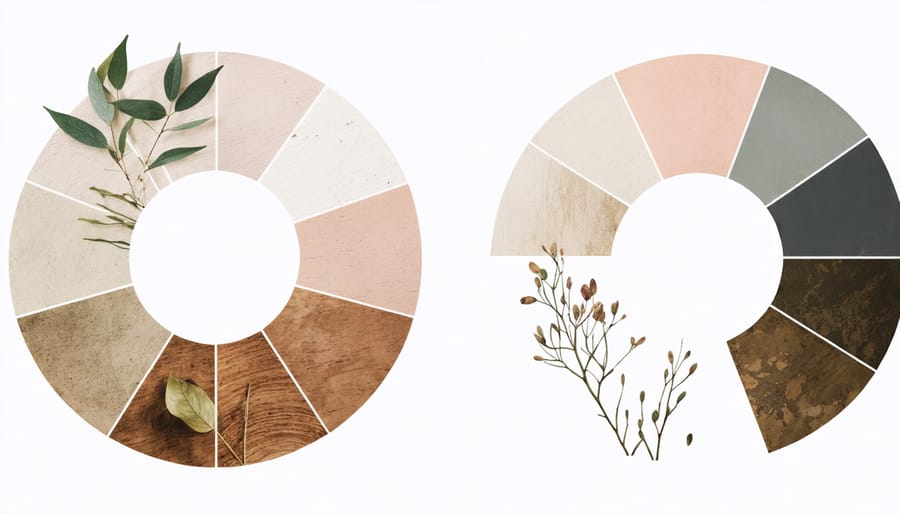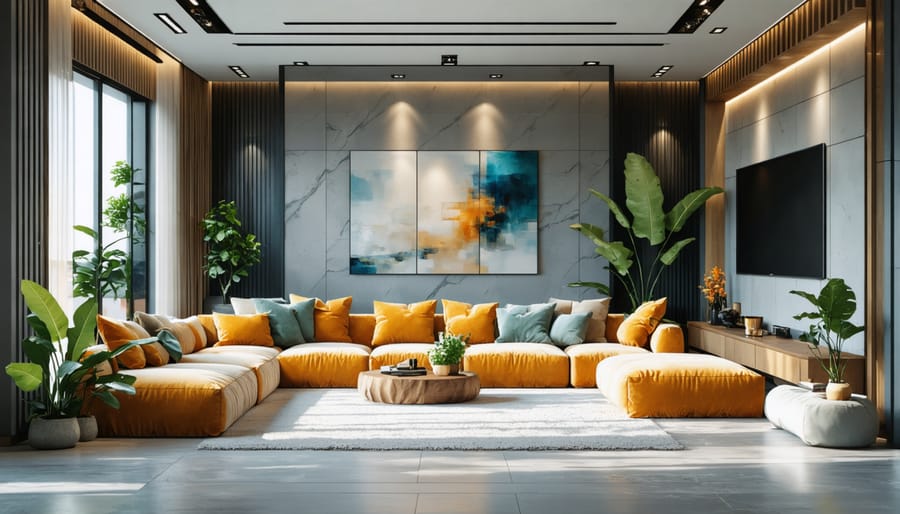Transform your living space into an eco-conscious sanctuary by embracing sustainable product design that marries form with environmental responsibility. Today’s homeowners face a critical challenge: creating beautiful, functional spaces while minimizing their ecological footprint. The solution lies in intelligent design choices that prioritize both aesthetics and sustainability.
Modern sustainable product design has evolved far beyond its utilitarian roots, now offering sophisticated options that rival traditional materials in both beauty and performance. From bamboo furniture that captures contemporary minimalism to recycled glass countertops that sparkle with unique character, sustainable materials have become the cornerstone of forward-thinking interior design.
By understanding the intersection of product design and sustainability, you can make informed choices that benefit both your home and the planet. Whether you’re planning a complete home renovation or simply updating your decor, incorporating sustainable elements doesn’t mean compromising on style. The key lies in selecting products that combine innovative design with environmental consciousness, creating spaces that are not only visually stunning but also responsible and future-proof.
This thoughtful approach to design ensures your home remains both beautiful and environmentally conscious, setting a new standard for modern living while preserving resources for future generations.
The Psychology of Color in Sustainable Design
Nature-Inspired Color Palettes
When it comes to sustainable product design, color plays a crucial role in creating harmony between our living spaces and the natural world. Taking cues from Mother Nature’s palette not only creates visually appealing environments but also supports our innate connection to the outdoors through nature-inspired design ideas.
Earth tones form the foundation of eco-friendly color schemes, featuring warm browns, soft greens, and rich terracottas that remind us of soil, foliage, and clay. These colors not only create a calming atmosphere but also help disguise wear and tear, extending the visual lifespan of products. Ocean-inspired blues and greens can add depth and tranquility to spaces, while sandy beiges and stone grays provide neutral backdrops that never go out of style.
Consider incorporating seasonal color variations in your design choices. Spring’s fresh pastels, summer’s vibrant hues, autumn’s warm oranges, and winter’s cool whites all offer sustainable inspiration. These nature-derived palettes work particularly well with sustainable materials like bamboo, cork, and reclaimed wood, creating a cohesive look that celebrates both form and function.
To ensure longevity in design, opt for timeless combinations rather than trending colors. This approach not only reduces the urge to replace items frequently but also creates spaces that feel grounded and connected to the natural world.

Color Psychology and Sustainable Living
The fascinating world of color psychology in design plays a crucial role in promoting sustainable living choices. Nature-inspired greens and blues can create a stronger connection to the environment, encouraging eco-conscious behaviors and mindful consumption. These earth-toned palettes remind us of our relationship with nature and often inspire more sustainable lifestyle choices.
Soft, muted greens are particularly effective in spaces where you make purchasing decisions, as they promote thoughtful consideration and environmental awareness. Blues, reminiscent of clean water and clear skies, can inspire conservation efforts and mindful resource usage in bathrooms and kitchens.
Earthy browns and warm beiges, colors associated with natural materials, can make sustainable products more appealing and help create a harmonious connection with eco-friendly materials like bamboo, cork, or recycled wood. These colors work particularly well in living spaces and home offices, where they can influence daily decisions about consumption and waste.
When selecting colors for sustainable spaces, consider using deeper, richer tones that hide wear and reduce the need for frequent repainting or replacement. Light, natural whites can maximize daylight usage, reducing energy consumption for artificial lighting. By thoughtfully incorporating these colors into your space, you create an environment that not only looks beautiful but also subtly encourages sustainable living practices.
Sustainable Materials and Their Visual Impact
Recycled and Upcycled Materials
The world of sustainable product design has undergone a remarkable transformation, with recycled and upcycled materials taking center stage in creating beautiful eco-friendly home decor. Today’s innovative designers are breathing new life into materials that would otherwise end up in landfills, creating stunning pieces that tell unique stories while protecting our environment.
Recycled plastic has emerged as a versatile superhero in sustainable design, being transformed into everything from sleek furniture to decorative wall panels. Ocean plastic, in particular, is being collected and repurposed into elegant lighting fixtures and modern accent pieces that bring both style and consciousness to our living spaces.
Reclaimed wood continues to be a favorite among designers and homeowners alike, offering character and warmth that new materials simply can’t match. Each piece carries its own history, whether it’s barn wood, old shipping pallets, or retired railway sleepers, creating furniture and architectural elements with authentic charm.
Glass and metal recycling have also reached new heights in design innovation. Crushed glass is being incorporated into stunning countertops that sparkle like diamond dust, while salvaged metal finds new purpose in industrial-chic furniture and artistic installations.
Perhaps most exciting is the emergence of experimental materials like mushroom leather, recycled textile composites, and agricultural waste products. These groundbreaking materials are proving that sustainability doesn’t mean sacrificing style or quality. Instead, they’re opening up entirely new possibilities for creative and environmentally responsible design solutions.

Natural and Renewable Resources
Natural materials are making a stunning comeback in product design, offering both sustainability and timeless beauty. Bamboo leads the pack as a rapidly renewable resource that’s perfect for everything from furniture to flooring, taking just 3-5 years to mature compared to hardwoods that can take decades. Its durability and warm aesthetic make it an excellent choice for modern interiors.
Cork is another star performer in sustainable design, harvested from the bark of cork oak trees without harming them. This versatile material provides natural insulation, sound dampening, and a unique textural element that adds character to walls, floors, and decorative items.
Reclaimed wood tells a story while saving trees, bringing character and history into contemporary designs. Whether it’s barn wood transformed into statement furniture or shipping pallets reimagined as wall art, these materials reduce waste while creating unique pieces.
Hemp and other fast-growing fibers are revolutionizing textile design, requiring fewer pesticides and water than conventional materials. These sustainable fibers create durable, beautiful fabrics for upholstery, curtains, and decorative accessories.
When selecting natural materials, look for certifications like FSC (Forest Stewardship Council) for wood products or GOTS (Global Organic Textile Standard) for fabrics. These ensure your choices support responsible resource management while bringing nature’s beauty into your space. Remember that sustainable materials often age beautifully, developing a rich patina that adds to their appeal over time.
Design Principles for Longevity
Versatile Design Elements
Creating products that stand the test of time requires thoughtful consideration of design elements that can adapt to changing needs and styles. The key lies in incorporating versatile furniture solutions and features that serve multiple purposes while maintaining their appeal over the years.
Consider modular components that can be easily updated or reconfigured as needs change. For example, drawer systems with adjustable dividers, shelving units that can be expanded or contracted, and seating with removable, washable covers all contribute to a product’s longevity. These adaptable features not only extend the product’s lifespan but also reduce the need for replacement, making them inherently more sustainable.
Color choices play a crucial role in versatility. Opt for timeless neutrals as base colors, with the ability to update accent elements as trends evolve. This approach allows products to remain relevant across different style preferences and seasonal changes.
Material selection should focus on quality and durability while considering environmental impact. Choose materials that age gracefully, like natural wood that develops a beautiful patina, or recycled metals that maintain their structural integrity for decades. These materials not only look better over time but also reduce the environmental burden of frequent replacements.
Remember that true versatility comes from simplicity in design. Clean lines and classic proportions create pieces that can easily transition between different styles and settings, ensuring their relevance for years to come.

Adaptable Aesthetics
When it comes to sustainable design, adaptability is your secret weapon for creating lasting impact. Think of adaptable design as investing in pieces that can evolve with your style and needs, rather than following short-lived trends that lead to frequent replacements.
Choose furniture and decor with timeless silhouettes that can be easily updated through simple changes. A well-made sofa with neutral upholstery can transform through different accent pillows and throws, while modular shelving systems can be reconfigured as your storage needs change. This flexibility extends the life of your pieces and reduces waste.
Color plays a crucial role in adaptable design. Opt for base pieces in versatile neutrals, then introduce sustainable accent pieces in current colors. This approach allows you to refresh your space without replacing major items. Consider materials that age beautifully, like natural wood that develops character over time, or metals that acquire an appealing patina.
Look for multifunctional pieces that serve various purposes. A storage ottoman that works as seating, or a dining table that doubles as a workspace, maximizes utility while minimizing the number of items you need to purchase. This approach not only supports sustainability but also creates efficient, clutter-free spaces.
Remember, the most sustainable product is one that stays out of the landfill. By choosing adaptable designs, you’re making an investment in both style and environmental responsibility.
Practical Tips for Sustainable Product Selection
Making sustainable choices for your home doesn’t mean sacrificing style or breaking the bank. Here are practical tips to help you select products that look great while being kind to the environment.
Start by adopting the “rule of thirds” when shopping: consider a product’s sustainability, functionality, and aesthetic appeal. This balanced approach ensures you’ll love and use your purchases for years to come, reducing waste and replacement needs.
When evaluating materials, look for certifications like FSC (Forest Stewardship Council) for wood products and GOTS (Global Organic Textile Standard) for fabrics. These labels ensure your items meet recognized environmental standards. Natural materials like bamboo, cork, and reclaimed wood often offer both sustainability and timeless appeal.
Consider these quick assessment questions before purchasing:
– Is it made from renewable or recycled materials?
– How long will this product last?
– Can it be repaired if damaged?
– What happens to it at the end of its life?
– Was it produced locally or transported long distances?
Shop secondhand when possible. Vintage and antique pieces often offer superior craftsmanship and unique character while preventing new resource consumption. Many online marketplaces and local shops now curate high-quality pre-owned items that fit contemporary styles.
Look for multi-functional pieces that serve several purposes, reducing the overall number of items you need. A storage ottoman that works as seating, or modular furniture that can be reconfigured as your needs change, are smart sustainable choices.
Choose timeless designs over trendy pieces. Classic styles remain relevant longer, reducing the urge to replace items when trends change. Opt for neutral base pieces and add personality through easily changeable accessories.
Pay attention to packaging when ordering online. Support brands that use minimal, recyclable packaging materials and avoid excessive plastic wrapping. Some companies now offer packaging-free options or take-back programs for packaging materials.
Remember that sustainable products often have higher upfront costs but provide better value over time through durability and reduced replacement needs. Consider it an investment in both your home’s style and the planet’s future.
As we’ve explored throughout this article, sustainable product design isn’t just a trend – it’s a necessary evolution in how we create and consume. By making conscious choices about materials, manufacturing processes, and product lifecycles, we can significantly reduce our environmental impact while creating beautiful, functional spaces.
Remember that every design choice matters. Whether you’re selecting furniture for your home or planning a renovation project, consider the long-term implications of your decisions. Opt for products made from renewable or recycled materials, support companies that prioritize sustainable manufacturing, and think about how items can be repurposed or recycled at the end of their life.
The good news is that sustainable design no longer means compromising on style or functionality. Today’s eco-friendly products offer the same aesthetic appeal and durability as their conventional counterparts, often with added benefits like improved air quality and reduced energy costs.
Start small if you need to – perhaps with sustainable textiles or recycled decorative pieces – and gradually expand your commitment to eco-friendly design. Every sustainable choice contributes to a healthier planet and creates demand for more environmentally conscious products.
By embracing sustainable product design, you’re not just creating a beautiful living space; you’re investing in our planet’s future. Let’s make sustainability a central consideration in all our design decisions, one choice at a time.
